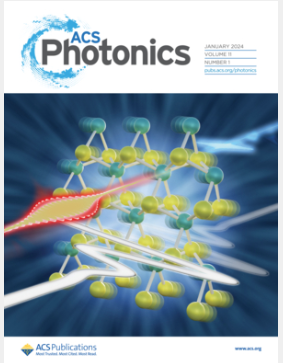Bipedal Anchoring Strategy via Dicarboxylic Acid Molecules for Efficient NiOx-Based Perovskite Solar Cells
IF 6.5
1区 物理与天体物理
Q1 MATERIALS SCIENCE, MULTIDISCIPLINARY
引用次数: 0
Abstract
Though nickel oxide (NiOx) has been widely used as a hole transport layer in inverted perovskite solar cells (PSCs), the performance of NiOx-based PSCs is limited by low conduction of NiOx, surface defects, lattice mismatch, poor energy level alignment, and redox reactions at the NiOx/perovskite interface. To address these issues, a series of small dicarboxylic acid molecules (DAMs) are introduced as a buffer layer between NiOx and the perovskite films in this study. Utilizing the double carboxylic acid moieties to orderly anchor NiOx, DAMs effectively passivate defects of NiOx and inhibit interfacial redox reactions. Among the DAMs, pyridine-3,5-dicarboxylic acid (P35DA) owns unique pyridine rings, which induce more favorable dipole moments for energy level alignment and interact with uncoordinated lead ion, thus regulating the crystallization of perovskite, reducing the interfacial tensile strain, and suppressing nonradiative recombination. Consequently, the devices based on NiOx/P35DA exhibit the champion power conversion efficiency (PCE) of 24.05% and 21.48% for 1.56 and 1.68 eV PSCs, respectively. Meanwhile, the unencapsulated devices maintain 81% of their initial PCE after being stored in air with 50–60% relative humidity for 1200 h, exhibiting remarkable environmental stability.

基于二羧酸分子的高效镍基钙钛矿太阳能电池双足锚定策略
虽然氧化镍(NiOx)已被广泛用作倒钙钛矿太阳能电池(PSCs)的空穴传输层,但NiOx基PSCs的性能受到NiOx的低导电性、表面缺陷、晶格错配、能级排列差以及NiOx/钙钛矿界面氧化还原反应的限制。为了解决这些问题,本研究引入了一系列小的二羧酸分子(dam)作为NiOx和钙钛矿薄膜之间的缓冲层。dam利用双羧酸基团有序锚定NiOx,有效钝化NiOx缺陷,抑制界面氧化还原反应。其中,吡啶-3,5-二羧酸(P35DA)具有独特的吡啶环,可以诱导更有利的偶极矩进行能级排列,并与不配位的铅离子相互作用,从而调节钙钛矿的结晶,降低界面拉伸应变,抑制非辐射复合。因此,基于NiOx/P35DA的器件在1.56 eV和1.68 eV的PSCs上分别表现出24.05%和21.48%的冠军功率转换效率(PCE)。同时,未封装的器件在相对湿度为50-60%的空气中存放1200 h后,其初始PCE仍保持81%,表现出显著的环境稳定性。
本文章由计算机程序翻译,如有差异,请以英文原文为准。
求助全文
约1分钟内获得全文
求助全文
来源期刊

ACS Photonics
NANOSCIENCE & NANOTECHNOLOGY-MATERIALS SCIENCE, MULTIDISCIPLINARY
CiteScore
11.90
自引率
5.70%
发文量
438
审稿时长
2.3 months
期刊介绍:
Published as soon as accepted and summarized in monthly issues, ACS Photonics will publish Research Articles, Letters, Perspectives, and Reviews, to encompass the full scope of published research in this field.
 求助内容:
求助内容: 应助结果提醒方式:
应助结果提醒方式:


